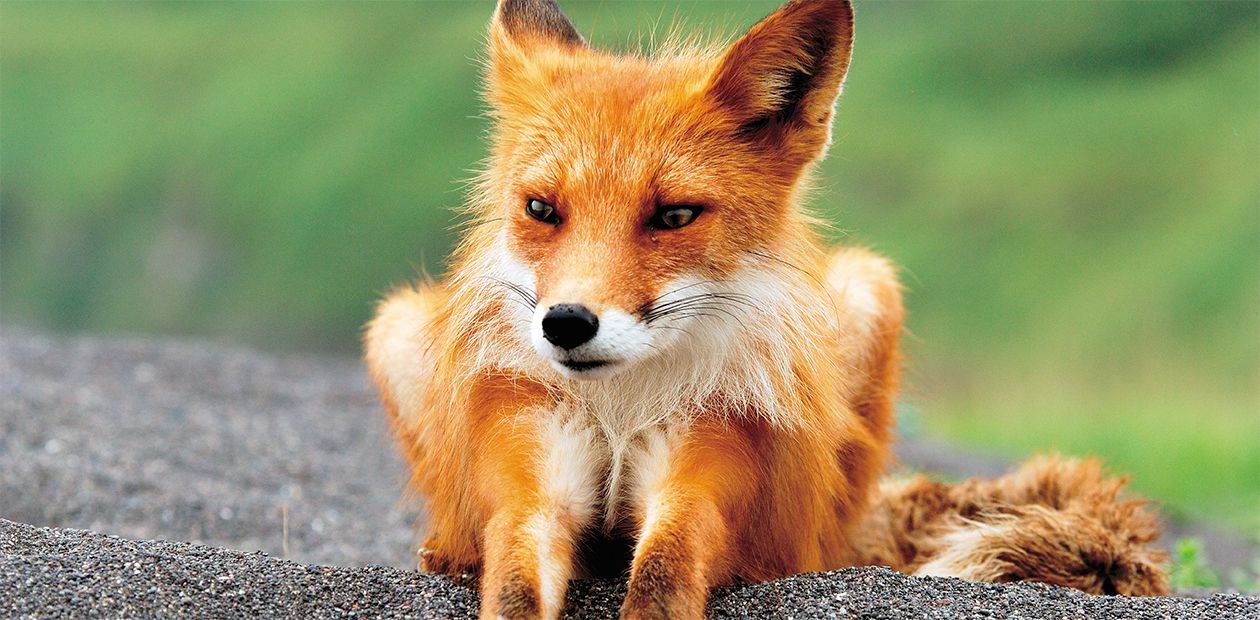Kamchatka’s Wildlife
In 2009 Russia’s oldest national park was 75. Located in the extreme east of the country, the Kronotsky State Biosphere Reserve was set up in 1934 in the place of the sable preserve that had been there since the late 19th c. If, originally, the Reserve was established to carry out the applied task of increasing the population of commercial species, currently it has the objective to preserve for the descendants this remarkable corner of Kamchatka in its natural and landscape diversity, with its unique geysers, volcanoes, thermal sources and wonderful animals. “SCIENCE First Hand” continues the series of publications about the Kronotsky Reserve, started by the story of the famous Geyser Valley and caldera of fading Uzon volcano. In this issue, we are going to tell you about the animals populating the reserve
In 2009 Russia’s oldest national park was 75. Located in the extreme east of the country, the Kronotsky State Biosphere Reserve was set up in 1934 in the place of the sable preserve that had been there since the late 19th c. If, originally, the Reserve was established to carry out the applied task of increasing the population of commercial species, currently it has the objective to preserve for the descendants this remarkable corner of Kamchatka in its natural and landscape diversity, with its unique geysers, volcanoes, thermal sources and wonderful animals.
SCIENCE First Hand continues the series of publications about the Kronotsky Reserve, started by the story of the famous Geyser Valley and caldera of fading Uzon volcano.* In this issue, we are going to tell you about the animals populating the reserve.
The history of the Kronotsky Reserve begins from the sable preserve arranged near Lake Kronotskoye.
For centuries, Kamchatka has been famous for its “fur gold”: Kamchatka sable skins, distinguished by their big size. Uncontrolled hunting of these valuable animals resulted in their virtually complete extinction on the peninsular. The only place where they still occurred was the neighborhood of Lake Kronotskoye.
The Kronotsky Biosphere Reserve is home to numerous unique natural features. Here belong the Geyser Valley and the Uzon Volcano caldera, the Kronotsky Lake ecosystem, the copse of gracious fir, and a multitude of thermal sources and lakes. The world-famous Geyser Valley is hidden in an inaccessible canyon. This is the only geyser field known in Eurasia. Its size is impressive. Focused within a small area are over forty geysers, a great many thermal sources, hot lakes, little mud volcanoes and steam jets. According to an all-Russia opinion poll conducted in 2008, the Geyser Valley was voted one of Russia’s seven wonders, along with Baikal, Petergof, Mamayev Kurgan, Saint Basil’s cathedral, Elbrus and weathering pillars in the Komi RepublicIn 1882, zoologist B. I. Dybovsky managed to justify the necessity to arrange a sable preserve there. The initiative belonged to local hunters, who were well aware of the urgent need to stop uncontrolled extinction of the sable and to do everything possible to preserve its habitats. After the preserve was started, the sable population on Kamchatka was gradually restored.
In 1917, in accordance with the decree of the Department of Agriculture of the Tsar government, the Kronotsky hunting area was declared a reserve. It took seventeen years, however, to get this decree approved – it happened in 1934, at a VTsIK (All-Russia Central Executive Committee) presidium meeting. This day is considered to be the Reserve’s birthday.
Closed twice
Initially, the Kronotsky Reserve was meant exclusively to preserve commercial animal species. The unique natural objects, today’s pride of the reserve – Geyser Valley, volcanoes of the Gamchenskaya Group – had not been discovered yet. This happened later, in 1941. At the outset, the primary task was to increase the populations of Kamchatka sables, wild reindeer, mountain sheep, and otters.
In the mid-20th century, the environmental policy of the Soviet state underwent a number of changes. The boundaries of the areas under protection were revised, many of the reserves were closed down, and their lands were handed over for economic needs. The Kronotsky reserve shared the same fate: in 1951 it was liquidated. Eight years later it was restored – only to be closed again in 1961.
Hunting was allowed in the former defense areas. It was done so aggressively that, in a short time, the population of the main species of game animals became smaller than in the neighboring hunting lands. The wild reindeer was almost totally extirpated, the mountain sheep and bear populations were undermined, the number of sables diminished, and the rookeries of Stellar sea lions were seriously damaged.
In the same period, the former protected lands were prospected for oil; plans for hydro power plant construction were developed; and all-Union hiking tours were arranged. It goes without saying that all these actions affected adversely the ecological condition of the area. Restoring the reserve within its former boundaries was a must. This was achieved in 1967, and the initiative belonged not to the biologists but to volcanologists – for the first time in the history of Russian reserve management!
The protection regime was re-established, cordons were arranged, and inaccessible regions were explored. The boundaries of the reserve were extended too. In 1982, it expanded to include the offshore zone of the Kronotsky Bay, which ensured good protection of the rare species of sea mammals, such as the Stellar sea lion, sea beaver, and Phoca vitulina stejnegeri J. A. Allen 1902 (subspecies of the harbor seal, Phoca vitulina). In 1992 the reserve grew by 43 hectares, after a plot of virgin dark coniferous forest in the basin of the River Kamchatka was added to it.
At present, the area of the Kronotsky Reserve is 1,142,000 hectares, including 135,000 ha offshore zone, which makes it one of the largest reserves in the world. The reserve covers virtually the whole of Kamchatka’s natural, climatic and species diversity – namely, 85 % higher plants, 75 % birds, and 90 % mammals of all the species inhabiting the peninsular. These include 11 plant species, 12 mammal species, and 35 bird species recorded in Russia’s Red Book.
The threat persists
After the Kronotsky Reserve was restored within its former boundaries, hunting for commercial species shifted to the adjacent areas. As a result, many species were threatened with extinction.
Originally, these were sables, otters, lynxes, and wolverines – traditional fur-trapping animals. In the 1980s, brown bears joined the list, because of the growing demand for their bile. The population of mountain sheep – a popular hunter’s trophy – was endangered as well. In no small part, the decrease in wild animals’ number was attributed to the thoughtless economic policy of local authorities.
As recently as twenty years ago, the number of wild reindeer caused no misgivings. However, development of domestic deer breeding in the lands where wild reindeer used to graze ruined their food supples, and intensive hunting, which ignored their geographical distribution, quickly diminished their numbers. Presently, the reserve is home to about 2,000 wild reindeer, which amounts to 95 % of Kamchatka’s entire stock. To compare, in the 1980s, the 500—800 animals recorded in the reserve constituted only 5—7 % of the total stock. And even this, practically the only population on Kamchatka, is endangered because reindeer are roaming animals, so they can be extirpated in the adjacent unprotected areas.
The “soaring lands” of Kronok
The Kronotsky Biosphere Reserve is more than a marvelous nook of nature. Located on its territory are a great many unique natural phenomena. Some of them have been known from of old; others were discovered only in the 20th century.
Kamchatka’s only population of graceful silver fir (Abies gracilis) had become known almost 300 years ago, before Alaska and the Komandorskiye Islands were discovered. “The Kamchadals protect this forest as a reserve, so none of them dares not only to cut but even to touch it,” wrote in 1720 one of the first explorers of Kamchatka, S. P. Krasheninnikov. Another explorer, the Russian geologist K. Ditmar, who was investigating, in 1852, the caldera of Uzon volcano, where numerous fumaroles – volcanic steam and gas vents – were concentrated, noted that local inhabitants avoided visiting those “soaring lands” lest “spirits got angry” with them.
In 1941, two outstanding events occurred that changed the destiny of the Kronotsky Reserve. While exploring inaccessible lands, geologist Tatiana Ustinova discovered a few geysers – fountains of hot water and steam – in the valley of a small tributary of the River Shumnaya. This spot was later referred to as the Geyser Valley. Some time later, zoologist Victor Gavrilov found a whole range of active volcanoes, one of which was subsequently named after him.
The discoveries made were so important that the focus of the Reserve’s activities shifted towards the studies of active volcanism and geothermal ecosystems of Kamchatka.
In 1986, by the decision of the UNESCO International Committee, the Kronotsky Reserve was given the international status and its area became part of the global net of the Earth’s protected biosphere reserves; in 1996, the Reserve, together with the federal Yuzhno-Kamchatsky State Preserve under the Reserve’s authority, was entered on the list of World Natural Heritage sites, in the section “Kamchatka Volcanoes.”
The role of the Kronotsky Reserve in preserving Kamchatka’s primeval nature can hardly be overestimated. However, the personnel of the Reserve do not restrict their activities to environmental protection and scientific research. Much time is devoted to educational and awareness-raising work.
In the town of Kronoks, the Museum of Nature was set up, which familiarizes its visitors with the flora and fauna of Kamchatka; arranges, on a regular basis, trips to the Geyser Valley and to the caldera of Uzon Volcano; and organizes wild nature treks. Employees of the Reserve give lessons in biology and regional studies and conduct children’s competitions.
Many of the Reserve’s areas have not yet been included in these educational activities, though they have a great recreational appeal. Geothermal sources and hot springs can serve as a basis for balneal and health care resorts. Kamchatka’s fantastic landscapes and its widest natural diversity are a great attraction for recreational athletes from all over the world.
The photos used in the publication are the courtesy of I. Shpilenok
* SCIENCE First Hand (in Russian), 2007, № 1 (13); 2009, № 2 (26), 3 (27).









